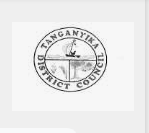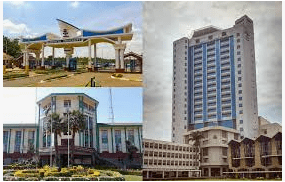
59 Jobs Opportunities From Various Posts at Tanganyika District Council-Check out All Posts, Understand How to Apply For these Jobs, Get Full Information Here.
59 Job Opportunities at Tanganyika District Council:- Tanganyika District is one of the districts of Katavi District. The headquarters is Mbanda. Until the beginning of 2016, this area was known as “Mbanda Rural District” (Mbanda Provincial Council). The name comes from Lake Tanganyika located on the eastern border of the region.
At the 2012 census, the population of the district was estimated at 179,136. The district headquarters in Majalila Village is currently being built in the Tongwa ward. The appointment came after Majalila’s qualifications for its accessibility due to being located along the main road from Mpanda – Kigoma, having two water tanks, and being in the plan to benefit from REA (Rural Electricity Agency)
Historical Background of Mpanda District Council
Introduction Historically, the Mpanda District Council was established in 1983 and is among the two districts established in Katavi District in 2012 from the former Mpanda District which was located in Rukwa District. The other districts are Mlele and Tanganyika District. Later five councils emerged i.e. Mbanda Municipal Council, Mpanda District Council, Mbembwe District Council, Melili District Council and Nsimbu District Council.
Geographical location Mpanda District Council shares borders with Uvinza (Kigoma District) to the north, Melili capital to the east, Nkasi (Rukwa District) to the south, and the Democratic Republic of the Congo (DRC) to the west across Lake Tanganyika.
The headquarters is located in Mpanda town along the Sumbawanga-Kigoma Road. 1.2 Coverage area and population size Mpanda DC has a total area of 16,911 square kilometers which is about 36 per cent of the total area of Katavi, most of which is plain land with very few hills and valleys which equals to 1,691,100 hectares which can be They are further divided into three broad categories according to usage. These areas are natural farms, forests, arable land, and space for settlements. Mpanda DC’s population has experienced a steady growth rate. The board’s growth rate was 3.2 percent during the 1988-2002 interensals and remained at the same rate of 3.2 percent in the 2002-2012 interslots.
According to the 2012 Population and Housing Census, the population of the district was 179,136 in 2012 compared to 119,939 in the 2002 census. The increase in council population, among other factors, was due to immigrants from outside the council as well as from outside the district . fertility of the land for agricultural activities in most areas of the Katuma Plain, Sibuisa, Bandandugu and Kabongo; The virginity of the land also helps the shepherds to migrate with their flocks in the council. The results of the 2012 census put the population of Mpanda the capital at 119,939 people, of whom females represent 50.0 percent of the population or 60,026 people.
Land use pattern (ha) in Mbanda DC; 2015 Source: Mpanda DC Office of the Executive Director – Lands, Department of Natural Resources and Environment, 2014 Physical environment, Landform, climate and vegetation. The climate of the Majlis varies by situation and is closely related to two distinct landscape regions, the highlands and the lowlands. Its altitude ranges from 1000 to 2500 meters above sea level and temperatures are between 260 and 300 °C annually. The average annual precipitation ranges from 920 mm to 1200 mm.
The council is characterized by highlands, small mountain peaks, steep hills, plateaus, and gentle plains. Miombo forests, tropical grasslands, savannah forests, and thorny shrubs are the most vegetation on the board. 1.4 Economic activities The main source of income in Mpanda district is the production of commercial crops which include tobacco, cotton, sunflower, honey, ground nuts and sesame, and on the other hand, the people of Mpanda district cultivate subsistence crops which are maize, rice, beans, cassava, and potato pods. Mpanda the capital, like other councils in the Katavi district, did not count neither GDP nor capitalist GDP, but its economy is still dominated by the agriculture sector, with more than 85 percent of the council’s population employed. Both cash and food crops are produced, with the latter dominating.
NOTE; 59 Job Opportunities at Tanganyika District Council
ALSO YOU MAY LIKE:
-
NEW Police Jobs in Tanzania 2021
-
60+ NGO Jobs in ICAP Tanzania
-
Drivers Jobs in Tanzania at CICan
-
105 Job Vacancies at Management and Development for Health (MDH)
59 Job Opportunities at Tanganyika District Council in Katavi District, September 2021, Please click or tap on the link below to view the job opportunities:-
Press OR CLICK HERE TO DOWNLOAD THE PDF FILE WITH JOBS DESCRIPTIONS
APPLY FOR 59 Job Opportunities at Tanganyika District Council
For more Details/Information visit HERE




Be the first to comment